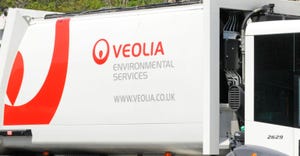Don't Forget the Fundamentals
September 1, 1999
Ron Brookshire
Over the past few years, many new recipes for managing landfill gas (LFG) have been created, driven by new regulations, environmental groups, the Not In My Backyard (NIMBY) syndrome, energy developers and general operations. While it seems more people than ever want to put their hands in the gas pot, remember the adage "too many cooks in the kitchen can spoil the soup."
The growing number of LFG cooks regulating, designing, constructing and operating facilities has caused many to loose sight of the basics of LFG and the lessons we have learned through the years. The reality is LFG can be explosive, environmentally toxic and a greenhouse gas. But, with proper management, it can be safe, environmentally sound and a potential energy source.
Step 1: Know Your Landfill Gas Understanding the decomposition process is critical to the design and construction of efficient landfill gas management systems. Unfortunately, even people who work in the business occasionally are puzzled by the process of collecting gas from municipal solid waste facilities, and have forgotten that we are dealing with a unique mixture of gases that are the result of the decomposition of a wide range of unknown material buried in the ground.
Trash turns into gas through anaerobic decomposition, which is characterized by large quantities of carbon dioxide with no methane content. It begins soon after refuse is placed into the landfill and covered up, preventing further introduction of oxygen. Initially, the landfilled material contains large quantities of oxygen that are trapped in the buried refuse. Bacteria consume the oxygen through a process known as aerobic decomposition. Once all the entrained oxygen is consumed, anaerobic decomposition begins.
Anaerobic decomposition produces a mixture of gas primarily consisting of methane and carbon dioxide with some water vapor. Other emissions such as hydrogen sulfide and volatile organic compounds (VOCs) usually are considered to be separate decomposition processes. However, together, they form LFG. Anaerobic decomposition continues until all organic material is consumed or until oxygen is reintroduced into the process.
The landfill cell normally is capable of retaining a limited quantity of the gases produced, with capacity depending on the cell's design and construction. If left uncollected, the LFG eventually will build up enough pressure to force its way out of the landfill space through the path of least resistance.
Known as migration, gas can be forced out vertically, above or below the landfill, as well as horizontally, out its sides. When migrating under pressure, gas can travel long distances, potentially contaminating or accumulating in pockets, causing asphyxiation or explosion hazards outside the site's immediate area.
However, a well-planned system can turn a nuisance into a resource. With a sensible design, LFG can be captured to minimize the migration potential. Once captured, it can be destroyed to protect the environment, or it can be used as a renewable energy source in place of fossil fuels.
Step 2: Managing Landfill Gas The general objectives for landfill gas management are:
* To keep the gas within the landfill boundaries;
* To keep gas out of the soils, groundwater and atmosphere; and
* To capture the gas and use it in place of other energy sources, when feasible.
To accomplish their objectives, landfill managers may choose between passive vent systems and/or active collection systems.
In cases where lateral migration control is the only concern, a passive or vent system may be appropriate. The typical passive venting system consists of a series of wells placed at strategic locations within the fill area to relieve the pressures created within the landfill during decomposition. Activated carbon canisters or individual wellhead flares can be incorporated into this system to help control odors and reduce emissions. The passive vent system is the least expensive gas management system, but it is limited in effectiveness.
To meet all other objectives, an active system will be required. With an active system, the series of wells in the landfill are connected to a gas collection pipe network, which is connected to a large vacuum system. The vacuum, or blower as it is normally called, creates a negative pressure within each well to draw the LFG into the collection system. Once collected, the gas can be destroyed or used for energy.
Active systems are used to control migration, emissions and odors, and for energy production systems. The typical active system allows the manager to measure vacuum pressure, temperature, flow and gas composition at each well and at the blower. These measurements, and the ability to adjust vacuum levels at each well, produce a highly robust method of collection that can help the operator balance the system for optimum efficiency.
Proper operation of the active system is critical. A delicate balance must be maintained - more vacuum is not necessarily better.
For example, with too much vacuum pressure, air can be drawn into the landfill potentially deteriorating the anaerobic decomposition process and creating the conditions for a landfill fire. Landfill fires can be dangerous, difficult to extinguish, and severely damaging to the environment and the owner's pocketbook. But once air intrusion begins, eliminating it becomes extremely difficult, and in some cases, impossible without abandoning a portion of the system.
In general, the objective is to remove the same amount of gas that is produced without oxygen intrusion. But constant changes in the landfill and operating from a single vacuum source can make this task difficult.
Step 3: Designing and Building an Effective System Hiring a professional to design and construct an efficient system is critical to success. Although many civil or environmental engineering firms offer this service, because LFG system design is a specialized area, an inexperienced engineer or contractor can turn a viable project into a disaster that may never be properly completed.
Find an LFG engineering professional with several years of experience working on successful projects. At the minimum, select a contractor who has working knowledge of current practices, as well as familiarity with design issues.
When you evaluate contractors to help design and construct your system:
* Request a reference list that is specific to LFG system design, and make sure you call all the references;
* Check with the local regulatory agencies for firms that have installed LFG systems, then call their customers; and
* Request a complete list of systems installations completed by the proposed company engineer, then verify that there are a sufficient number to make you feel comfortable with their company's stability and the system's performance.
During the initial project development stages, consider a design-build approach that removes some of the cooks from the kitchen vs. the traditional separation of duties. This one-stop approach may not be right for everyone, but it can produce efficient projects and potentially save money and sleepless nights if savings on design, construction, interface, as-builts, inspections, completion time and quality assurance all can be achieved.
Overall, LFG management systems can be constructed and operated efficiently and cost-effectively by focusing on the basics and recalling lessons learned from the past. Focusing on the basics should not stifle invention, but should enhance the discovery of unique solutions.
A majority of landfill gas management sites are closed, with limited funds to support the gas system. Therefore, a cost-effective, environmentally sound installation with a focus on long-term cost savings and the opportunity to use LFG as a renewable energy source can be the key to success. WA
You May Also Like


